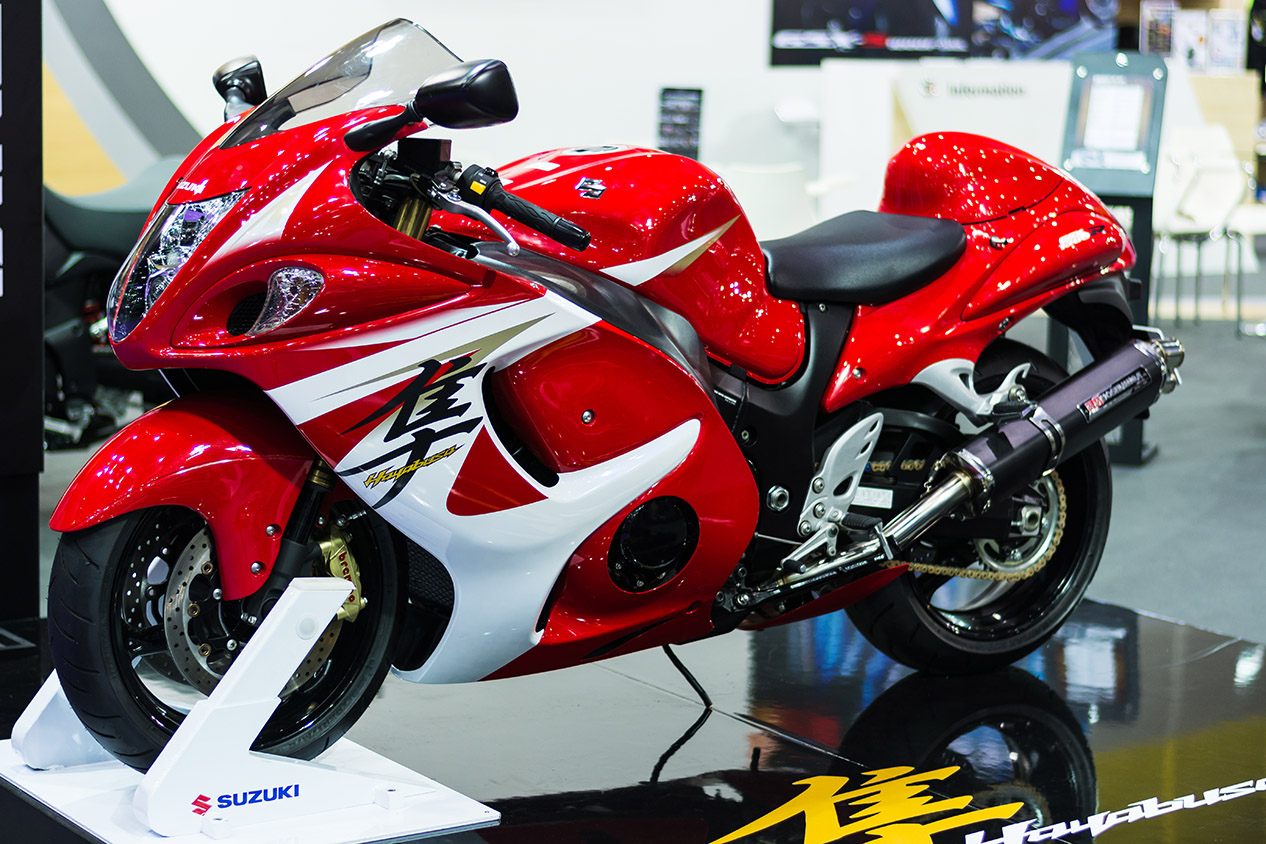After starting out as a manufacturer of weaving looms, Suzuki diversified into cars and eventually building its first motorbike, a 36cc motorised bicycle, in 1952.
Over the years, the brand has created some special bikes and gained a hardcore following. From popular day-to-day wheels like the Bandit, SV650 and V-Strom to some of the most hard edged sportsbikes and even the world’s fastest production motorcycle, Suzuki has had some smash hits over the years.
Whittling them down to just five was a tough act, but in the end we’ve gone for this quintet. Disagree? Why not tell us what you think through our Insidebikes social media channels?
Suzuki GT750 (1972)
Our first entry is a classic motorbike with a dedicated following.
The early 1970s was a time when Japanese manufacturers developed the first superbikes, as they looked to topple Norton, BSA and Triumph in the big bike markets.
Honda were first out of the blocks with the CB750. Kawasaki’s Z1 arrived in 1971 and this, the Suzuki GT750, came a year later.
Suzuki’s approach was different to the others. While the Honda and Kawasaki were to create what was known as the UJM (Universal Japanese Machine) with air-cooled across the frame four-cylinder designs, Suzuki came out with this three-cylinder two-stroke.
The GT750’s real claim to fame is that it is the first water-cooled Japanese motorcycle. That gave it the nickname ‘Kettle’ in the UK (and it was known as ‘The Water Buffalo’ in the States).
The Kettle put out close to 70bhp, but it was heavy at almost 220kg before any fluids were added. It spent six years in the Suzuki range, before the need to make cleaner motorcycles marked its death knell, but the GT750 (as well as the smaller two-strokes in the GT range) are popular on the classic bike scene today.
Suzuki RG500 Gamma (1985)
Suzuki dominated 500cc Grand Prix racing for a large part of the 1970s, most famously with Barry Sheene winning the 1976 and 1977 world titles on the RG500 racers.
The square four engined machines provided a competitive package for privateers over the years, while Italian racer Franco Uncini won Suzuki’s last title in 1982.
In 1985, Suzuki introduced the ultimate road going race replica with this – the RG500 Gamma. The Gamma was closely related to Uncini’s 1984 racer and made a claimed 95bhp in a 156kg package.
Suzuki made some great two-strokes race replicas over the years, most notably the RGV250, but the RG500 Gamma was the stuff of dreams back in the day. Just over 9000 were produced in a two year run, and today they are hugely collectable classic thanks to their rarity and historic importance.
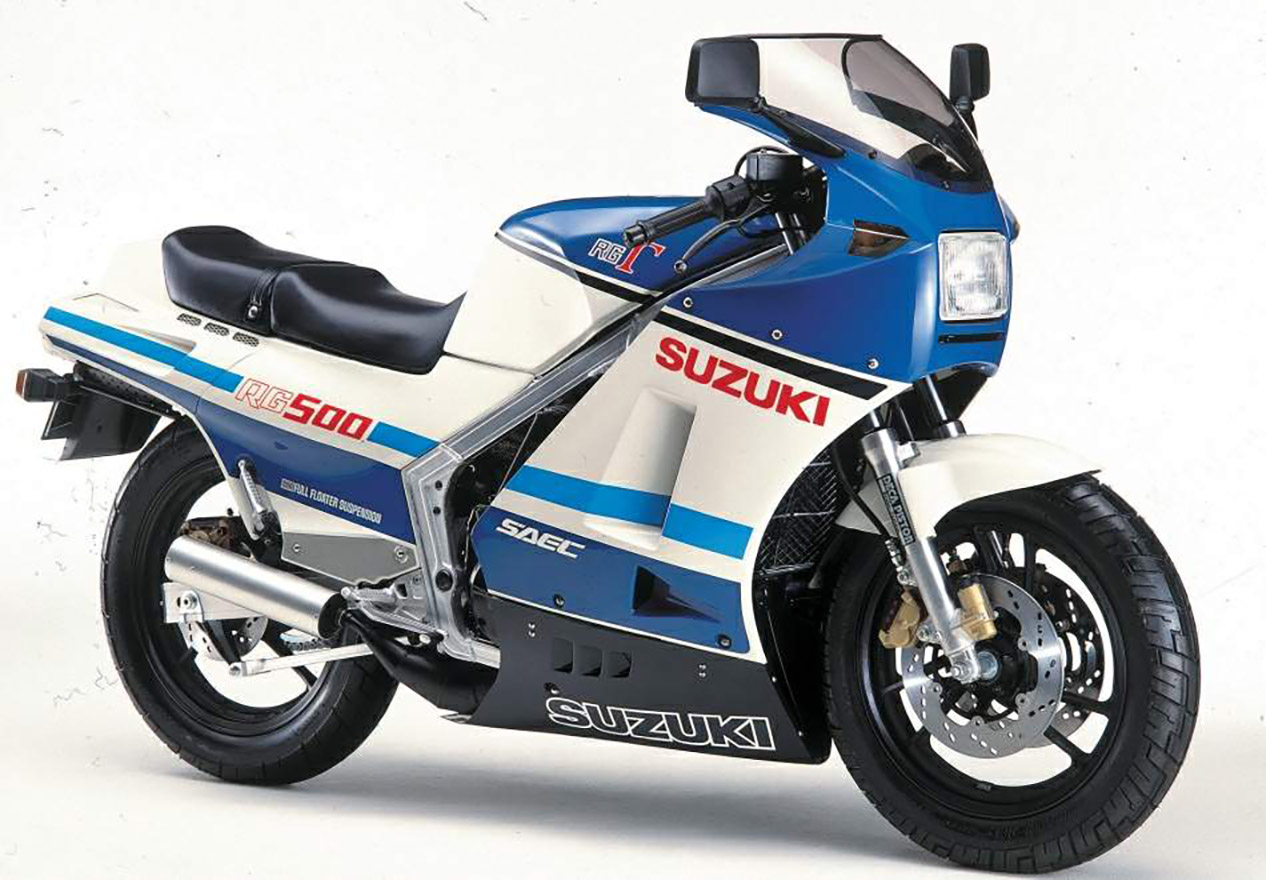
Suzuki GSX1100S Katana (1981)
With its sci-fi looks, the Suzuki Katana was one of the poster bikes of the early ‘80s.
With its silver paint, angular lines and pop up headlight (on Japanese models, at least) it looked like a bike of the future. Under its skin, the Katana was less futuristic than the styling suggested. The motor was a typical UJM in-line four, air-cooled but with 16 valves, and it earned the title of ‘fastest production bike in the world’ when it was launched in 1981, thanks to a top speed of over 140mph.
Despite the hype, the Katana’s star didn’t shine for long. Suzuki gave the Katana treatment (silver paint, red detailing, cast wheels and angular lines) to more mundane models like the GS650, but by the mid-1980s the world had moved on and more rounded styling became the trend. Barring a few futuristic Yamahas, no-one else really picked up the Katana styling cues…
Suzuki rebooted its ‘80s poster boy in 2019. Based on the GSX-S1000S, the modern Katana could well be the first in a new trend for 1980s retro. Maybe…
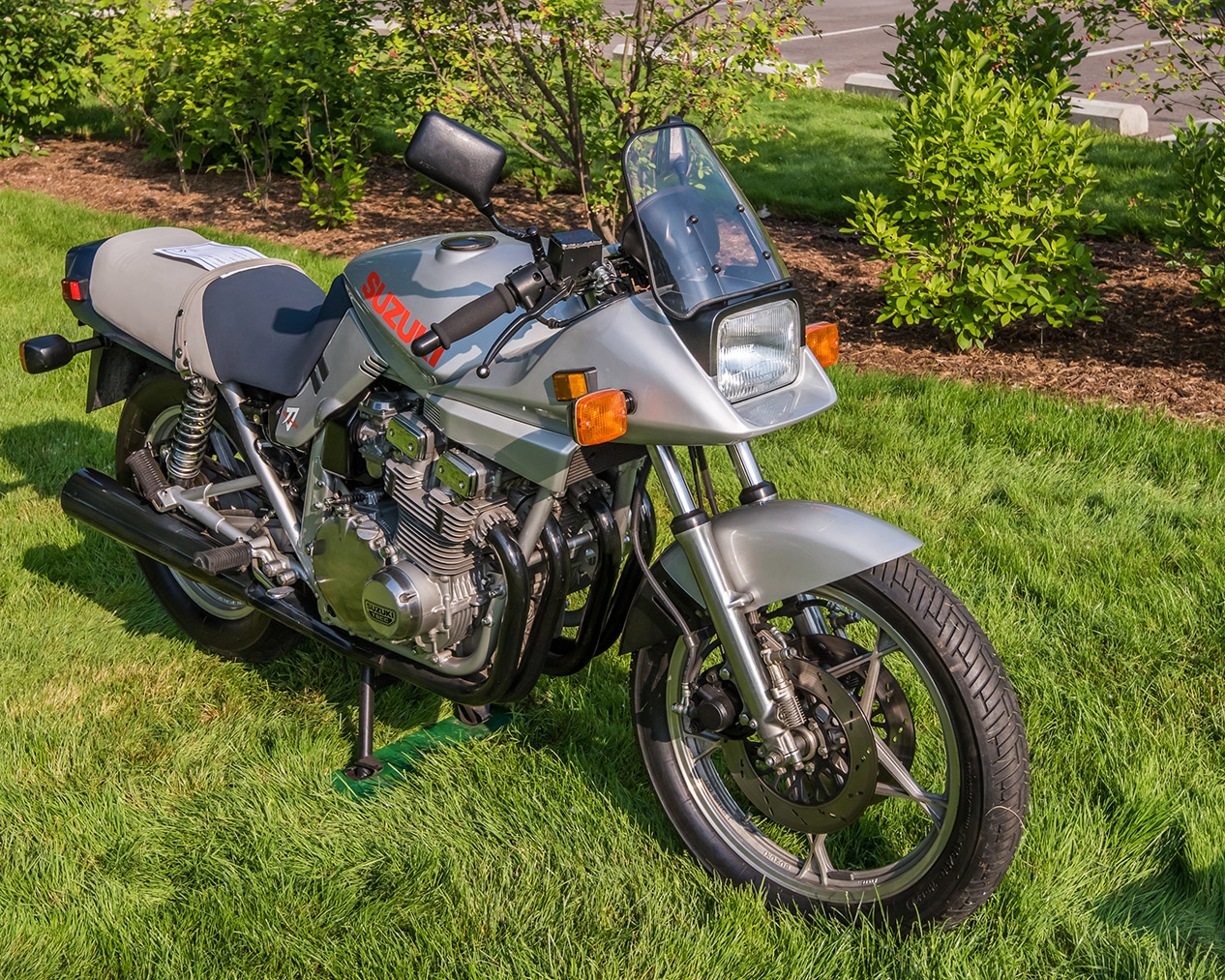
Suzuki GSX-R750 (1985)
Ask any die-hard biker to name one iconic Suzuki and the chances are they’ll say this – the GSX-R750, or Gixxer as it is commonly known by its legion of fans.
The GSX-R moved sports bikes from the realm of big capacity UJMs like the Katana to scalpel sharp race replicas. If you ride a 600 or 1000cc sportsbike today, you owe a debt of gratitude to the GSX-R. This is Genesis.
Back in the early 1980s, when the GSX-R was conceived, the leading four-stroke racing class was called Formula One. The series predated world superbikes and used production-based four-stroke motors in Grand Prix style prototype chassis. The GSX-R was born out of Suzuki’s participation in Formula One racing with the GS1000R racer.
Weight, or rather a lack of it, was everything with the GSX-R. The 180kg mass was achieved through liberal use of magnesium, while the engine was oil cooled to save the complexity of watercooling and all that entailed.
That it was a bit lively on the road only added to the legend. Later models were longer, heavier and more manageable, but the Gixxer remained the bad boy of a now evolving class. True nutters could also specify a GSX-R1100, which was available from 1986.
Over the years the GSX-R design has become increasingly homogenised, losing some of the characteristics (oil cooled engine and the up and over frame design) that marked it out from the competition.
Today the GSX-R1000 is the flagship model of the Suzuki range, and the company has remained loyal to keeping a 750cc model too, even though that capacity has been long abandoned by other manufacturers, such is the iconic nature of the GSX-R750.
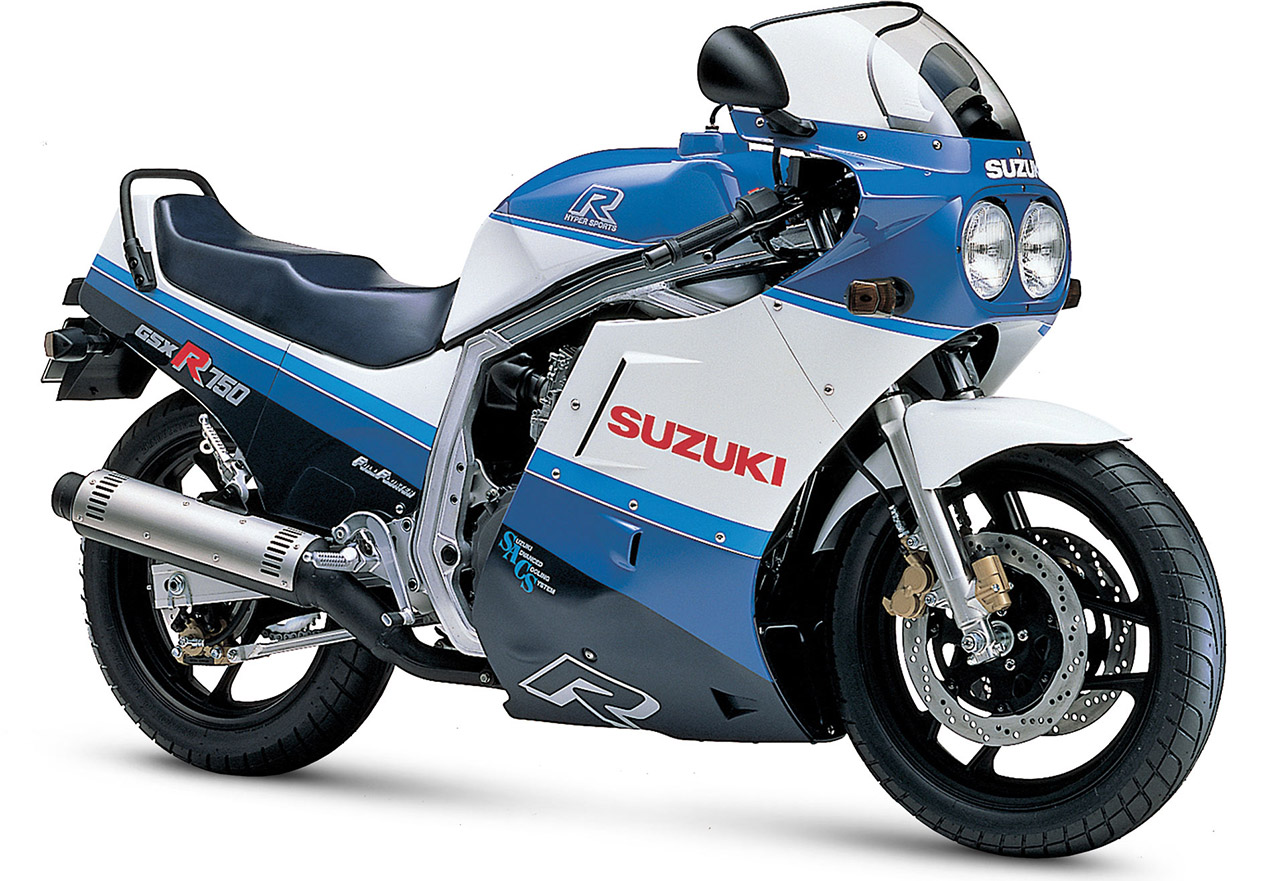
Suzuki GSX1300R Hayabusa (1999)
Along with the ‘Gixxer’ the ‘’Busa’ is arguably the most recognisable model to Suzuki aficionados.
Launched at the end of the millennium, the Hayabusa took over from the Honda CBR1100XX Super Blackbird as the world’s fastest production bike, with a top speed of over 300kph (186mph).
The distinctive styling polarised opinion (Suzuki openly admitted that they weren’t aiming to win any beauty contests) and the headline grabbing top speed led to an agreement between the Japanese manufacturers to impose a 300kph ‘Gentleman’s Agreement’ to cap top speeds of future models.
As if the Hayabusa wasn’t fast enough, many fans took to modifying them to make them lighter and faster, with aftermarket exhausts, fancy paintjobs and even turbo chargers and nitrous oxide kits.
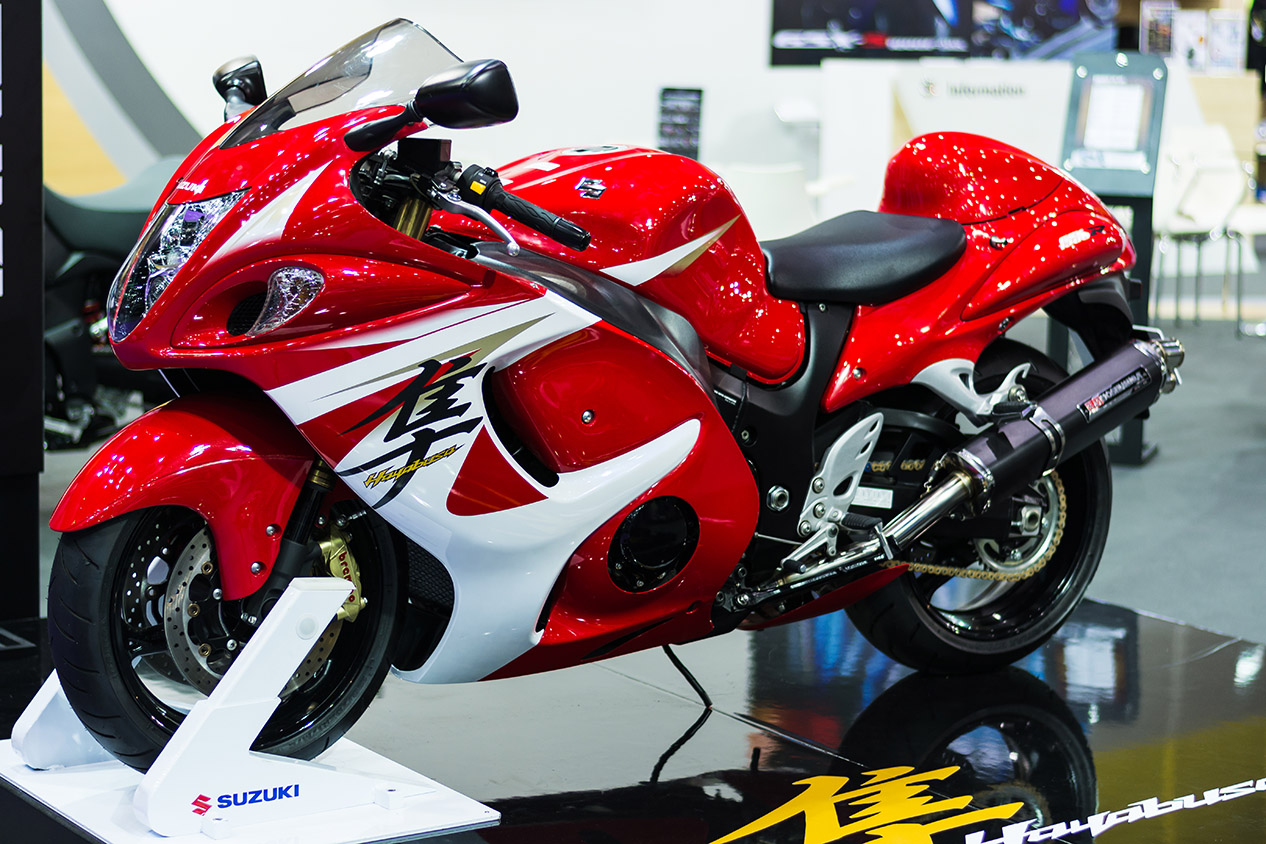
Photos: Shutterstock/Suzuki


